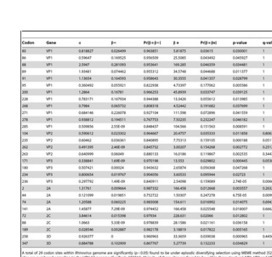Population Structure and Evolution of Rhinoviruses
Rhinoviruses, formerly known as Human rhinoviruses, are the most common cause of air-borne upper respiratory tract infections in humans. Rhinoviruses belong to the family Picornaviridae and are divided into three species namely, Rhinovirus A, -B and -C, which are antigenically diverse. Genetic recombination is found to be one of the important causes for diversification of Rhinovirus species. Although emerging lineages within Rhinoviruses have been reported, their population structure has not been studied yet. The availability of complete genome sequences facilitates study of population structure, genetic diversity and underlying evolutionary forces, such as mutation, recombination and selection pressure. Analysis of complete genomes of Rhinoviruses using a model-based population genetics approach provided a strong evidence for existence of seven genetically distinct subpopulations. As a result of diversification, Rhinovirus A and -C populations are divided into four and two subpopulations, respectively. Genetically, the Rhinovirus B population was found to be homogeneous. Intra-species recombination was observed to be prominent in Rhinovirus A and -C species. Significant evidence of episodic positive selection was obtained for several sites within coding sequences of structural and non-structural proteins. This corroborates well with known phenotypic properties such as antigenicity of structural proteins. Episodic positive selection appears to be responsible for emergence of new lineages especially in Rhinovirus A. In summary, the Rhinovirus population is an ensemble of seven distinct lineages. In case of Rhinovirus A, intra-species recombination and episodic positive selection contribute to its further diversification. In case of Rhinovirus C, intra- and inter-species recombinations are responsible for observed diversity. Population genetics approach was further useful to analyze phylogenetic tree topologies pertaining to recombinant strains, especially when trees are derived using complete genomes. Understanding of population structure serves as a foundation for designing new vaccines and drugs as well as to explain emergence of drug resistance amongst subpopulations
Source: www.plosone.org
See on Scoop.it – Virology and Bioinformatics from Virology.ca
